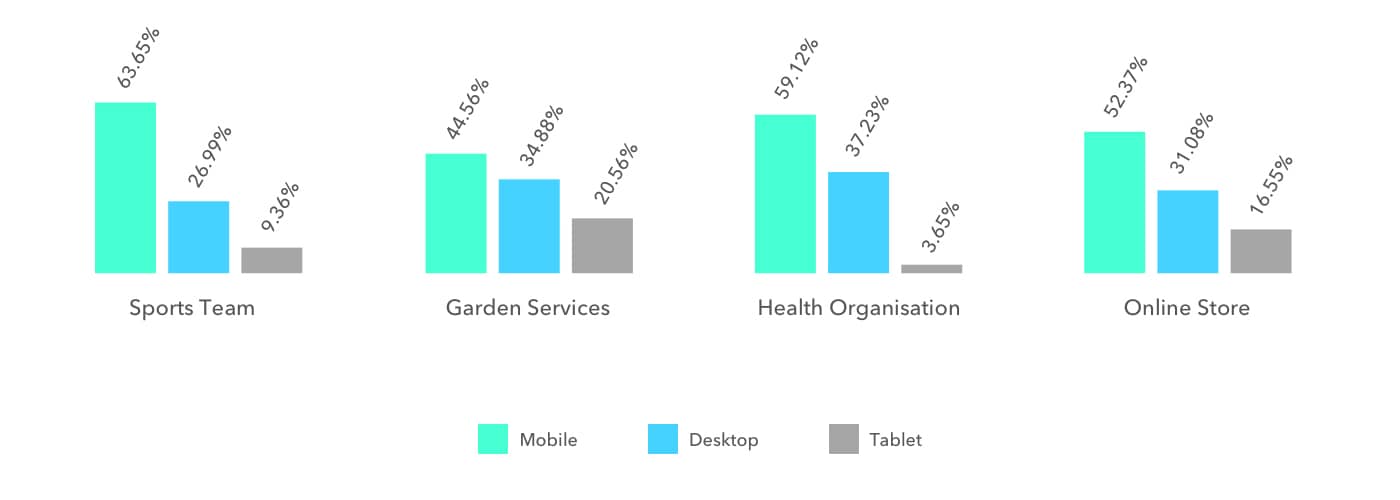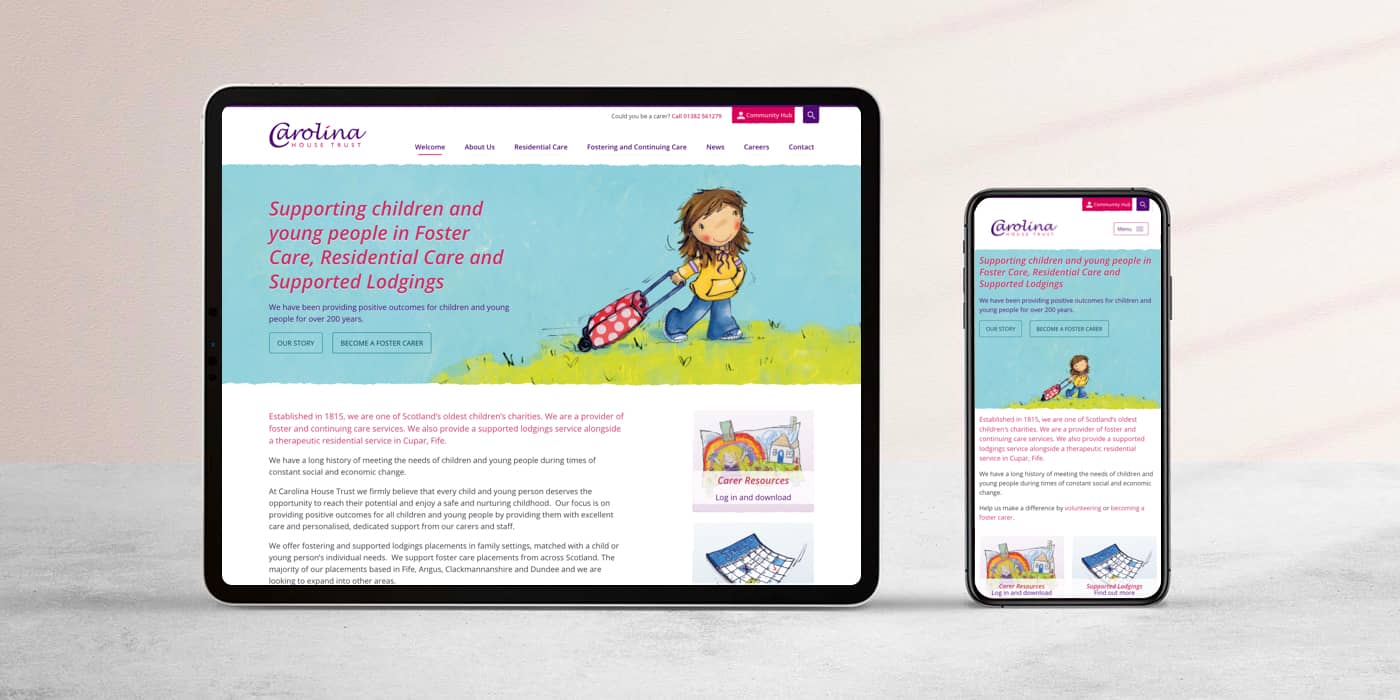Why mobile is more critical to your business than you think - and what to do about it.
A potential customer receives an email from your business. They open it and click a link to your landing page or website. Another visits your site after searching for a term that you rank highly on. Another sees a post on a friend's Facebook timeline. Three new customers all using your website for the first time.
All of these scenarios are usually great news for a business. All full of promise. But what if this all happens on their mobile device? Do things still look as promising?
Mobile is now overtaking desktop for most key consumer activities. How does this impact your business?
Real customer data, March 2018 *

It’s highly likely that your customers, as part of their natural research or buying process, are using a mobile device to view and interact with your emails, website and any other online area of your business.
These critical first points of contact are not very often ready for smaller screens. Customers squint, pinch and scroll in all directions, looking for product or contact pages that are hard to find, slow to load or difficult to read on their device — not a great experience for them. And your brand suffers as a result.
Over 14 million people in the UK used a mobile phone to research a product to buy in the last month. More than 11.5 million made a purchase. **
This mobile growth has happened relatively fast in recent years, and businesses haven’t been able to adapt as quickly as they would like. Or they don’t know where to start.
Do you need expensive apps built for each type of device? Do you need to create and maintain a separate mobile website?
One of these might be the approach for larger companies in some situations, but for the average small-to-medium business, another solution is needed.
Responsive design to the rescue!
Your existing website, landing pages and email templates can all be adapted in the short-term, to suit the smaller screens being used by your customers every day. Part of what responsive design offers is an effective (and cost-effective) way of updating your existing design layout. It enables you to move from a fixed size design (much larger than a mobile screen) to a layout that can adapt to an unlimited range of smaller screen sizes, including portrait and landscape views.

Your content, navigation, images and videos are now presented in a way that makes them easy to digest. No more pinching to zoom, double-tapping the screen or scrolling sideways for your customer to get what they need. A positive brand experience!
The good news is that this can be done now and doesn’t involve an expensive redesign. And you should see positive and measurable results straight away as people find what they are looking for much faster. However, it won’t be perfect, and there may be some compromises. This leads us on to what to do next, moving beyond the short-term solution for mobile.
The long-term view. The bigger picture. Your competitive edge.
Small screens aren’t going away any time soon. Watches, glasses, fridges. It’s a brave new world! So how can you take full advantage? Competition is fierce in most markets so those who meet their exact customer needs on mobiles will get the edge over those simply adapting somewhat to the situation and leaving it at that.
We know about people’s behaviour when browsing the internet on their mobiles through readily available research – and common sense!
This research indicates that people are reluctant to:
- read long pages on a small screen
- fill out long forms for registering or purchasing
- use complex navigation with text links that are hard to tap
People want your information quickly and easily. They want the price of a product. They want your contact number to call. They want your postcode for their sat-nav. All with minimal loading time while on the move on limited 3/4G connections!
So how do we move beyond quick fixes and become a mobile marketing marvel?
In most cases, fully meeting these customer needs will require some careful thought, planning and investment in new responsive designs for emails, websites, landing pages and other online areas.
Spending money on mobile might not seem like a priority for your business at the moment. But those who do will reap the rewards of its ever-increasing popularity.
So, what is the cost of not moving to mobile? Start planning your mobile marketing push today!
Follow us on Twitter or Linkedin for more critical thinking and practical advice for strengthening your brand using intelligent digital marketing strategies.
Article sources:
- Real data gathered and approved by our customers for March 2018. (*)
- GlobalWebIndex, Q4 2014. Based on a survey of Internet users aged 16-64. (**)
- StatCounter Global Stats